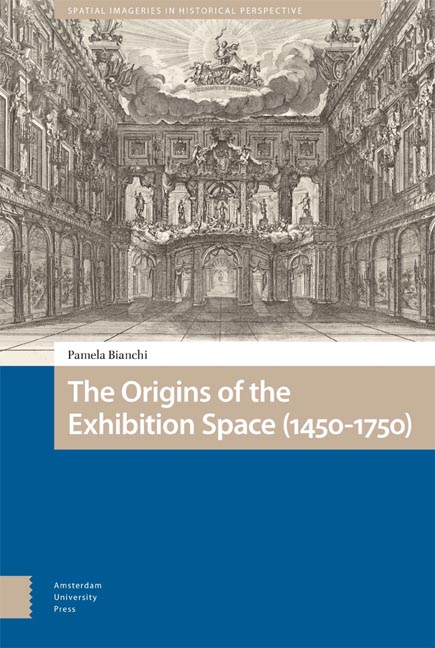3 - (Domestic) Interiors
Published online by Cambridge University Press: 14 October 2023
Summary
Abstract: This chapter dwells on inner spaces and focuses on the house as the first space for the exhibition of social self-representation. It insists on the hybridisation of the public/private dyad and the ancient habit of “dressing up spaces” to commemorate political, social and religious events. It traces the dawn of the first exhibition practices in these events. It thus analyses Italian noble palaces and Dutch burghers’ dwellings. Also, it discusses the ideas of aesthetic promenade and the performativity of setting up, the definition of an early museography stemmed from the desire to educate the visitors’ gaze, on the role of collecting in the evolution of exhibition practices and the transformation of the architecture of collecting.
Keywords: history of collecting, house, setup, display, aesthetic experience, architecture
Starting from the Italian sixteenth century, a complex interplay took place between the form, the function and the use of early modern dwellings, their interiors, their architecture and decoration, and the works of art displayed there. Sometimes, the works of art on display affected the spaces in which they were seen or for which they were made, altering their structures and forms. Often, paintings, sculptures and other objects reflected upon the social meanings of the specific space, helping define the social activities taking place there, and the social meaning and image the owner wanted to show off. Façade, sala nobile, portego, private apartments, central hall, were organised following a symbolic setting-up where artworks often played the metaphorical role of theatrical devices.
Dressing Up Environments: From Representative Spaces to Exhibition Rooms
Ancient and modern dress: in the matter of dressing rooms, the ancients win in some instances and we in others. They are victorious in the decoration of baths, gold and silver vases, columns, and marble panelling. If we are not equal to them in the working of floors, ceilings, pavements, and sumptuous chairs, then we are only a little behind. We win in silk and gold tapestries, carpets, doors, tables, pottery […], and paintings.
One of the first manifestations of the relationship between dwelling and exhibiting can be found in Vitruvius’s De Architettura, which, among the various places composing the house, described the tablinum as the room decorated with paintings (tabulas).
- Type
- Chapter
- Information
- The Origins of the Exhibition Space (1450-1750) , pp. 57 - 120Publisher: Amsterdam University PressPrint publication year: 2023

